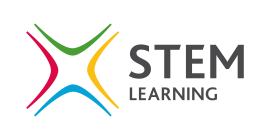- View more resources from this publisher
 STEM Learning
STEM Learning
CPD taster - Introduction to working scientifically
This is a CPD taster created to give teachers a better understanding of what to expect when joining one of our primary science courses. Below you will find a video and a task for you to do in your own time. Once you have done the activity, book on to Introduction to working scientifically (RP024).
Within primary science, children are expected to develop not only key foundational knowledge in biology, chemistry and physics, but also skills needed to work scientifically. But what do we mean by "working scientifically"? This course will help you get to grip with these terms and consider how to develop this aspect of the National Curriculum within your teaching.
In this video Tanya Shields, Primary STEM lead, explains more. There is then a short task that gives a sample of the types of activities you will be guided through on this CPD course.
Task: Real-life working scientifically
In the video, Tanya discussed the importance of working scientifically within the curriculum, and the 5 types of enquiry as defined by the Primary Science Teaching Trust. A key component of this is expanding children's understanding and awareness of those who work scientifically in real life.
The non-statutory guidance in some National Curriculum programmes of study suggests exploring the work of real scientists. For example in Year 5, Living things and their habitats, children could find out about the work of naturalists and animal behaviourists, perhaps David Attenborough or Jane Goodall.
In this short task, we invite you to look at the Science at Work website resources related to real-life working scientifically, and evaluate how you would use them in the classroom.
- Visit the Science at Work website. Science at Work is a collaboration between the Primary Science Teaching Trust, Spectrum Drama, and St. Mary's University to create opportunities to meet past and present scientists.
- Look through the resources and consider how you might incorporate them, or something similar, in your teaching. Note down your thoughts so you can discuss with colleagues in the future.
When thinking about the work of real life scientists, try to include a diverse range of subjects and backgrounds, so that pupils can see that science is not just for one specific group of people. Inspiring Scientists is a collection of resources to help develop children's understanding and awareness of science and the diversity of scientists.
Next steps
The Introduction to working scientifically course gives you the time to consider the place of working scientifically within the curriculum, will help increase your knowledge of progression within working scientifically, and provide a wide range of strategies for planning, resourcing and organising enquiries.
Book your place on Introduction to working scientifically (RP024).
Show health and safety information
Please be aware that resources have been published on the website in the form that they were originally supplied. This means that procedures reflect general practice and standards applicable at the time resources were produced and cannot be assumed to be acceptable today. Website users are fully responsible for ensuring that any activity, including practical work, which they carry out is in accordance with current regulations related to health and safety and that an appropriate risk assessment has been carried out.





